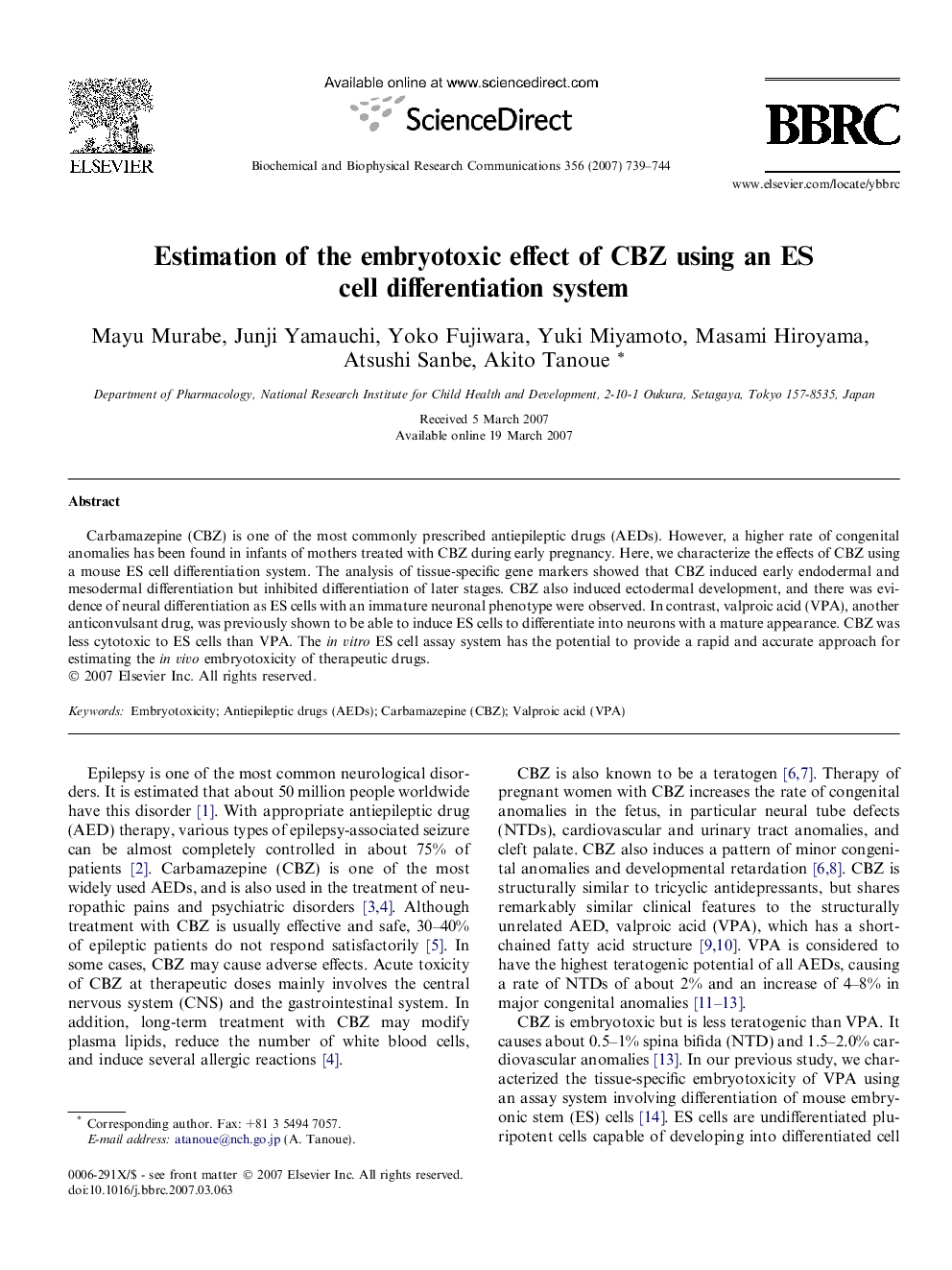| Article ID | Journal | Published Year | Pages | File Type |
|---|---|---|---|---|
| 1937874 | Biochemical and Biophysical Research Communications | 2007 | 6 Pages |
Carbamazepine (CBZ) is one of the most commonly prescribed antiepileptic drugs (AEDs). However, a higher rate of congenital anomalies has been found in infants of mothers treated with CBZ during early pregnancy. Here, we characterize the effects of CBZ using a mouse ES cell differentiation system. The analysis of tissue-specific gene markers showed that CBZ induced early endodermal and mesodermal differentiation but inhibited differentiation of later stages. CBZ also induced ectodermal development, and there was evidence of neural differentiation as ES cells with an immature neuronal phenotype were observed. In contrast, valproic acid (VPA), another anticonvulsant drug, was previously shown to be able to induce ES cells to differentiate into neurons with a mature appearance. CBZ was less cytotoxic to ES cells than VPA. The in vitro ES cell assay system has the potential to provide a rapid and accurate approach for estimating the in vivo embryotoxicity of therapeutic drugs.
